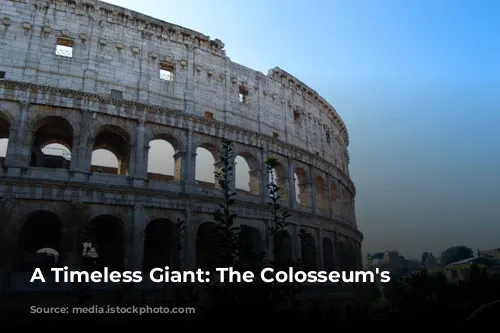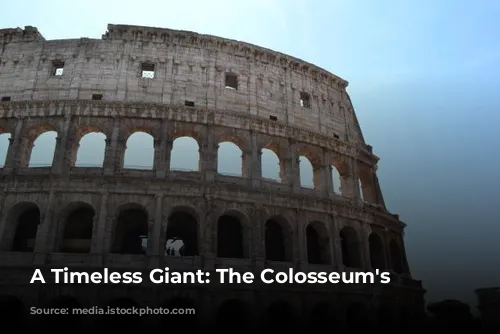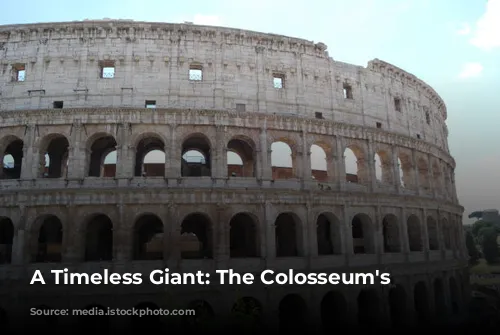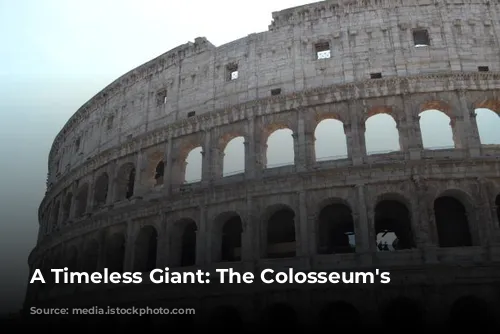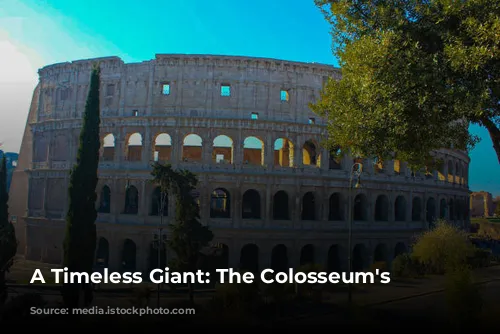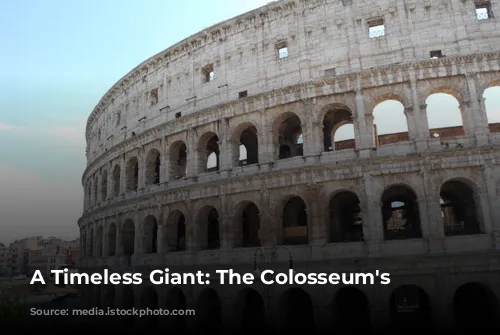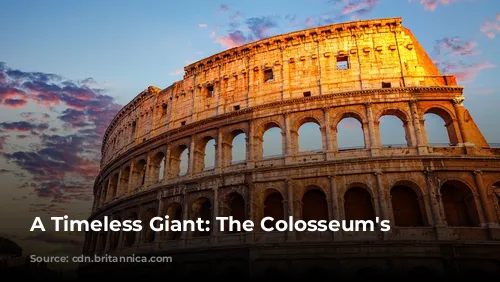The Colosseum, a majestic relic from the Roman Empire, stands as a powerful testament to the ingeniousness of ancient Roman architecture and engineering. This imposing structure, one of the few largely intact remnants from that era, draws millions of tourists each year, generating significant revenue for the Italian government. In 2018 alone, the Colosseum, Roman Forum, and Palatine Hill together attracted over $63.3 million (€53.8 million) in revenue, making it the top tourist attraction in Italy.
The Colosseum’s remarkable story spans centuries, filled with periods of grandeur and periods of neglect. After the fall of the Western Roman Empire, the Colosseum fell into a state of serious disrepair. It was used as a fortress by influential Roman families during the 12th century and as a stone quarry in the late 15th century. It wasn’t until the 1990s that state-funded restoration efforts were initiated, breathing new life into this iconic monument.
A Symbol of Imperial Might
The Colosseum was conceived as a symbol of imperial power and a means to revitalize Rome after the turbulent year of the four emperors in 69 CE. The emperor Vespasian, known for his practicality and ambition, intended the Colosseum to be a spectacle for the masses, a place for gladiator fights, animal hunts, and even mock naval battles.
The construction of this colossal structure commenced under Vespasian’s reign between 70 and 72 CE. His son and successor, Titus, dedicated the completed structure in 80 CE. Domitian, Titus’s brother and successor, added the fourth story in 82 CE. The funds for this monumental project came from the spoils of war, particularly the plundering of Jerusalem by Titus in 70 CE. Sadly, the construction of the Colosseum was made possible by the use of enslaved Jewish laborers from Judaea.
A Monument of Engineering Marvel
The Colosseum is an elliptical amphitheater, built with stone, concrete, and tuff, standing four stories high at its highest point. This imposing structure, measuring 620 by 513 feet (189 by 156 meters), could accommodate up to 50,000 spectators. Its primary purpose, like other Roman amphitheaters, was to host gladiatorial combat. The Colosseum, also known as the Flavian Amphitheater, is strategically located just east of the Palatine Hill on the site of Nero’s Golden House. The artificial lake that once graced this imperial palace was drained, making way for the Colosseum’s construction.
The placement of the Colosseum was both symbolic and practical. Vespasian, whose rise to power was not marked by royal lineage, chose to replace Nero’s opulent private lake with a public amphitheater that could unite the Roman people. The Colosseum became a symbol of Rome’s renewed vigor and its commitment to public entertainment.
A Stage for Spectacle and Survival
The Colosseum’s dedication ceremony in 80 CE, overseen by Titus, was a spectacle of grand proportions, lasting 100 days and showcasing various forms of entertainment. The uppermost story was completed by Domitian in 82 CE. Unlike other Roman amphitheaters, which were often built into hillsides for structural support, the Colosseum is a freestanding structure, showcasing the innovative engineering skills of its creators. Its unique construction utilizes a complex system of barrel vaults and groin vaults, giving the arena its distinctive elliptical shape.
The Colosseum’s grandeur is further enhanced by its architectural design. Three of the arena’s stories are adorned with arcades, framed by engaged columns in the Doric, Ionic, and Corinthian orders. This rising arrangement of columns became a fundamental principle of Renaissance architecture, known as the assemblage of orders. The Colosseum’s exterior is built primarily from travertine, while volcanic tufa forms the secondary walls. Concrete is used for the inner bowl and the arcade vaults, showcasing the creative and practical use of available materials.
The Colosseum’s design also included a remarkable feature: a retractable awning known as a velarium, which shielded spectators from the scorching Roman sun. Supporting masts extended from corbels built into the Colosseum’s attic story, and hundreds of Roman sailors were responsible for manipulating the rigging that extended and retracted the velarium. The Colosseum’s arena was a stage for countless spectacles: gladiator fights, animal hunts, and even mock naval battles. However, there is no definitive proof that the Colosseum was the site of early Christian martyrdoms.
A Monument of Resilience
In medieval times, the Colosseum was used as a church and later as a fortress by powerful Roman families. The Colosseum suffered from lightning strikes, earthquakes, vandalism, and pollution. The marble seats and decorative materials were gradually removed, leaving the Colosseum in a state of decay for over a thousand years. Efforts to preserve the Colosseum began in earnest in the 19th century, led by Pope Pius VIII. In the 1990s, a comprehensive restoration project was undertaken, ensuring the Colosseum’s survival for future generations.
The Colosseum remains a major tourist attraction, drawing close to seven million visitors annually. The Colosseum’s presence continues to captivate and inspire, offering visitors a glimpse into the grandeur of the Roman Empire. Regular exhibitions are held at the Colosseum, showcasing the culture and history of ancient Rome. The Colosseum, a symbol of resilience and enduring beauty, stands as a lasting testament to the engineering prowess and artistic brilliance of ancient Rome.




